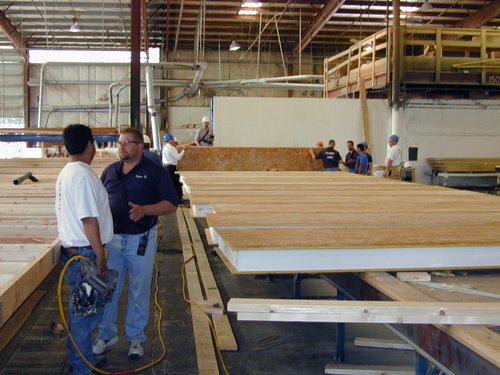Technology Spotlight: Structural Insulated Panels
Monday, September 19, 2011Alexis Powers
Editor’s Note: This post is one of a series of technology spotlights that introduces common technologies used in U.S. Department of Energy Solar Decathlon team houses.
Structural insulated panels (SIPs) are prefabricated structural elements used to build walls, ceilings, floors, and roofs. Made of foam insulation sandwiched between two layers of structural board, SIPs provide a more airtight dwelling than a standard stud-frame house. This creates a quieter and more energy-efficient interior space.
Various types of insulation can be used in SIPs in homes. The most common insulating material is polystyrene or polyisocyanurate foam. Foam insulation is added between two sheets of oriented strand board (an engineered wood product formed by layering strands of wood in specific orientations) to create an airtight seal. SIPs made with a straw-based core offer a sustainable alternative to foam insulation, but they are heavier and less efficient.

These structural insulated panels consist of foam insulation sandwiched between oriented strand boards. (Courtesy of Michael Bacchler)
SIPs can be made in various sizes and thicknesses to fit building specifications. In most cases, the manufacturer sends the panels directly to the job site. A major benefit of using SIPs in new house construction is the ease with which the panels fit together. Several U.S. Department of Energy Solar Decathlon teams enjoy this advantage during construction in the solar village.
SIPs cost about 15% more than standard stud frames. However, the tighter insulation can result in a 12%–14% decrease in energy bills. The initial investment usually makes the most sense for new construction efforts.
For More Information
Visit the Energy Savers website to learn more about SIP technology. Search the building envelope section of the Solar Decathlon 2009 product directory to find more information about the SIPs used by 2009 teams.
Alexis Powers is a member of the Solar Decathlon communications team.
